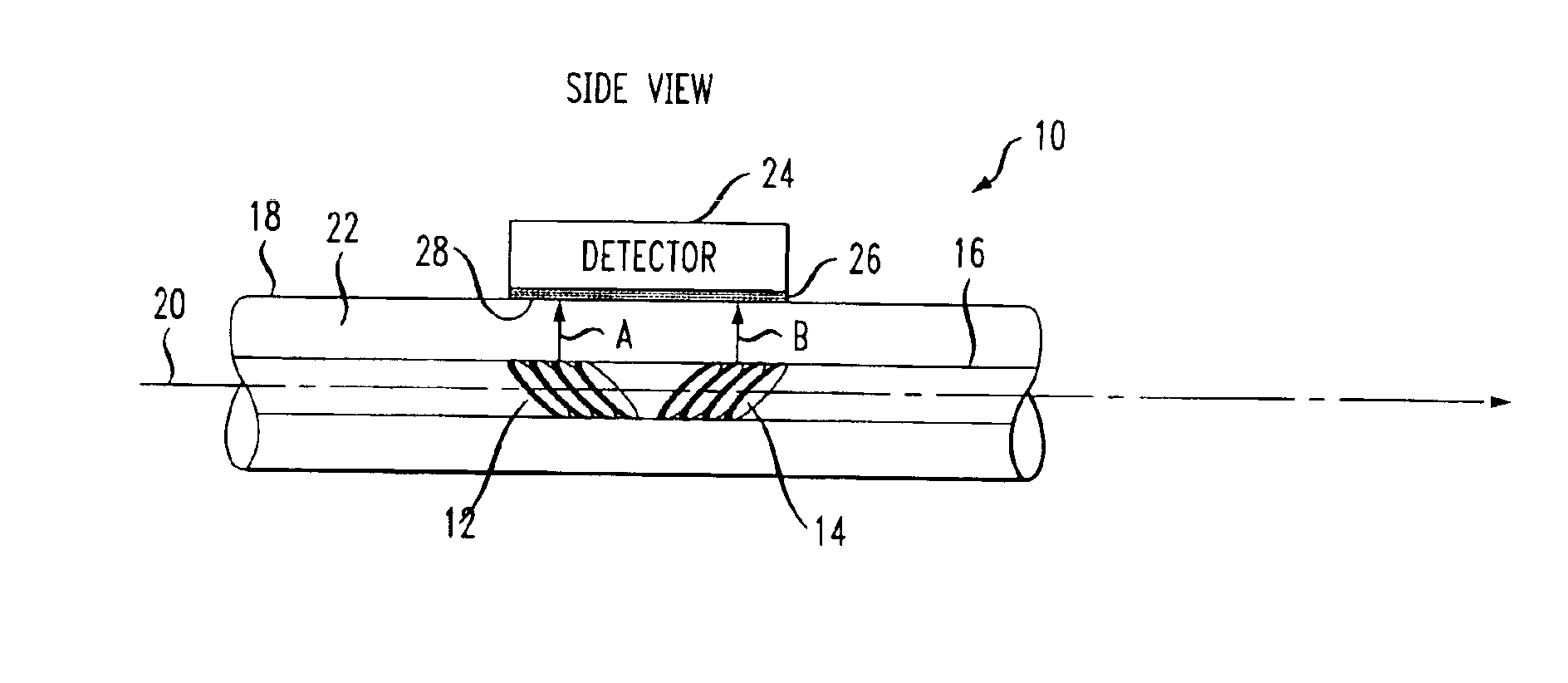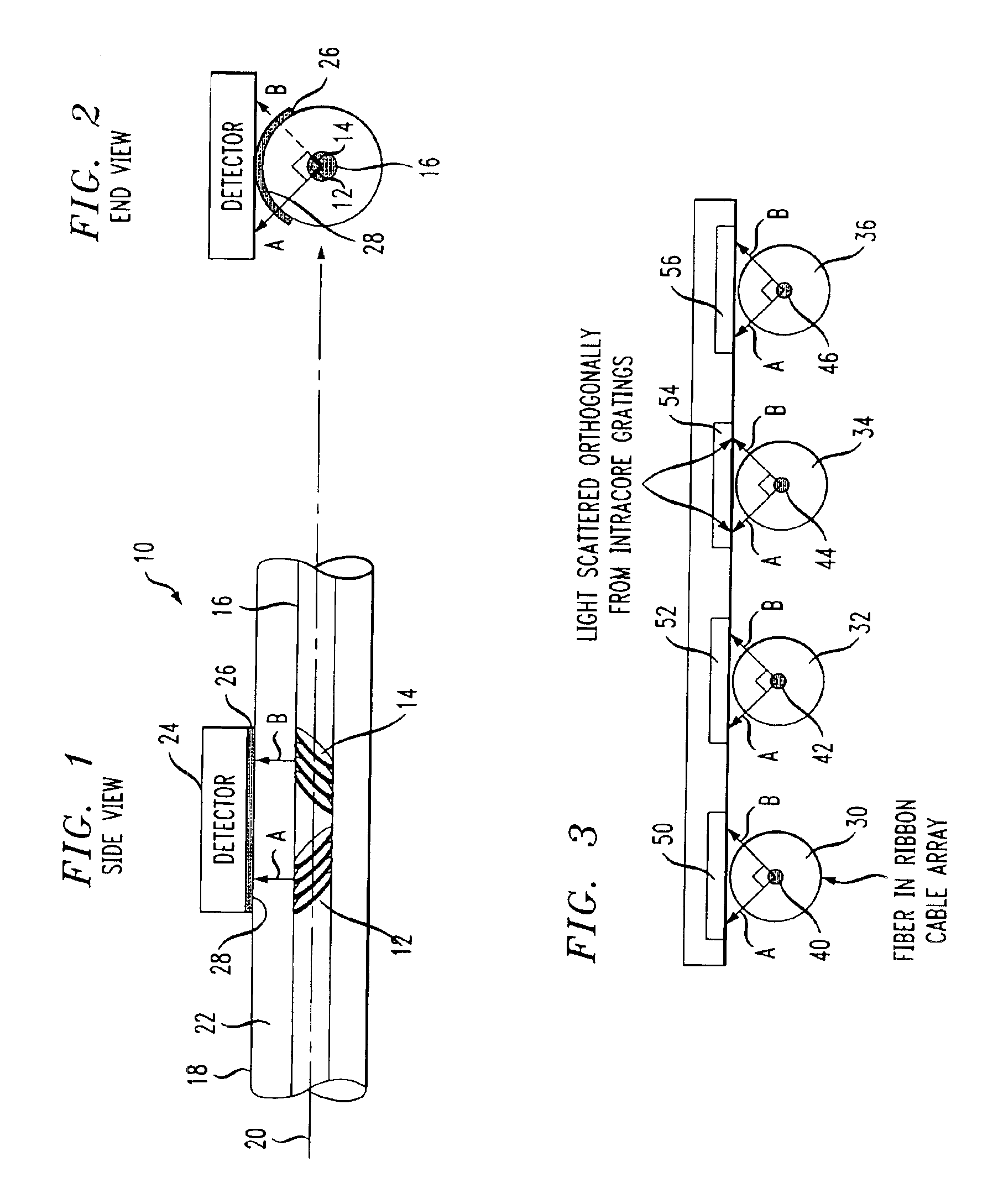Optical taps formed using fiber gratings
a fiber grating and optical tap technology, applied in the field of optical taps, can solve the problems of polarization-dependent problems and undesirable polarization effects, and achieve the effect of eliminating any polarization-dependent variations in the propagating optical signal
- Summary
- Abstract
- Description
- Claims
- Application Information
AI Technical Summary
Benefits of technology
Problems solved by technology
Method used
Image
Examples
Embodiment Construction
polarization-insensitive tap of the present invention with an in-line all-fiber polarimeter, the tap used to measure the output power from the polarimeter;
[0018]FIG. 6 contains an alternative embodiment of the combination of a polarimeter and an optical tap, where the final grating in the polarimeter is used as one of the gratings in the optical tap; and
[0019]FIG. 7 illustrates an optical tap of the present invention and an associated shaped reflector used to redirect the out-coupled light from the pair of fiber gratings.
DETAILED DESCRIPTION
[0020]When the period of a fiber grating is adjusted so as to couple core guided light into light propagating approximately orthogonally through the fiber (that is, through the cladding so as to exit along the side of the fiber), the tilted grating will scatter the light in a highly polarization sensitive and highly directional manner. Importantly, the scattering is extremely broadband, since the orthogonally scattered light has a very small inte...
PUM
 Login to View More
Login to View More Abstract
Description
Claims
Application Information
 Login to View More
Login to View More - R&D
- Intellectual Property
- Life Sciences
- Materials
- Tech Scout
- Unparalleled Data Quality
- Higher Quality Content
- 60% Fewer Hallucinations
Browse by: Latest US Patents, China's latest patents, Technical Efficacy Thesaurus, Application Domain, Technology Topic, Popular Technical Reports.
© 2025 PatSnap. All rights reserved.Legal|Privacy policy|Modern Slavery Act Transparency Statement|Sitemap|About US| Contact US: help@patsnap.com



